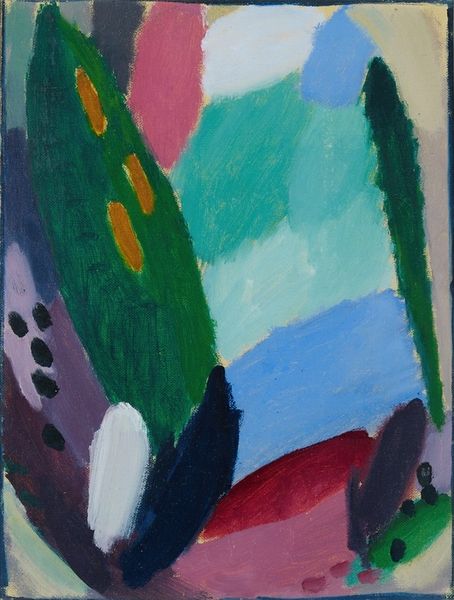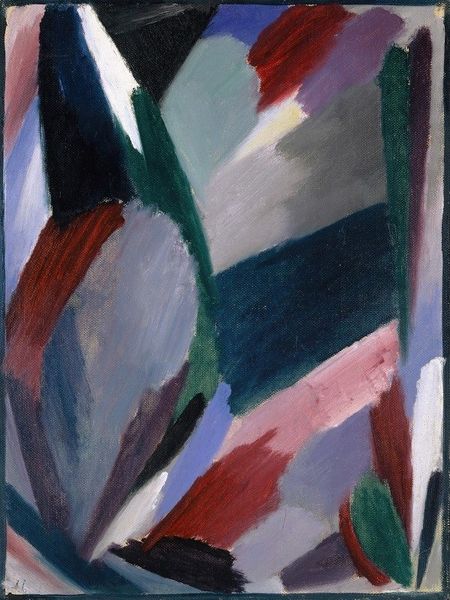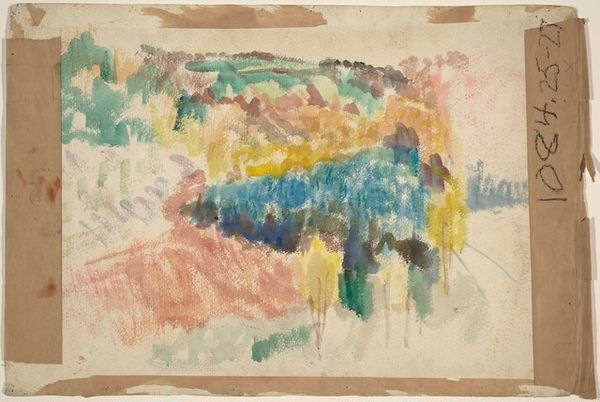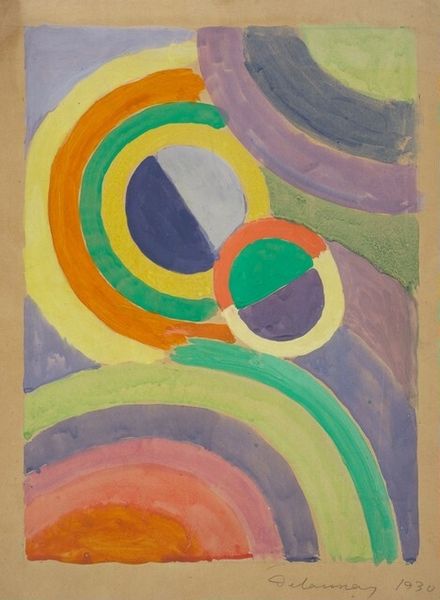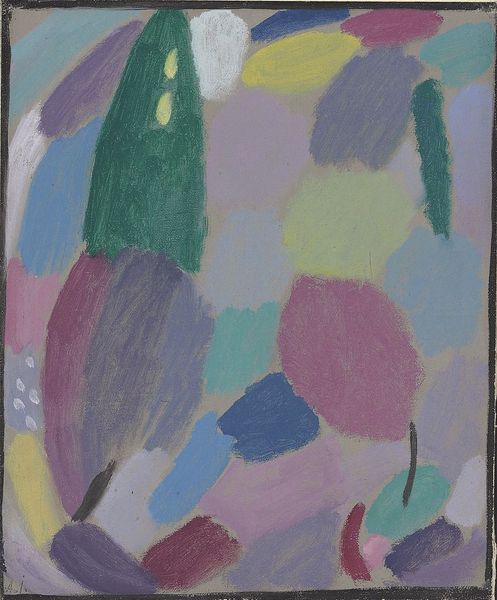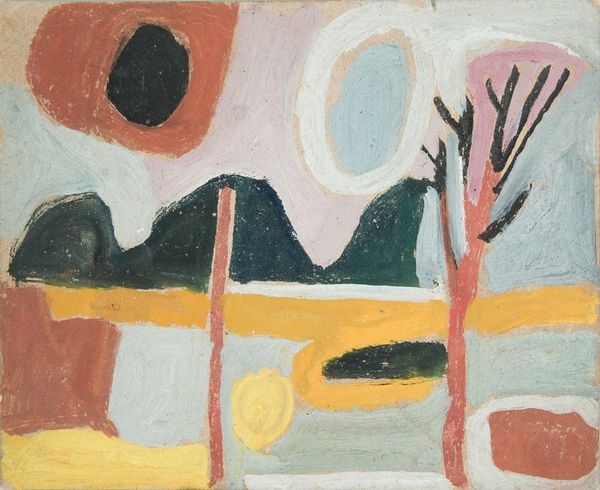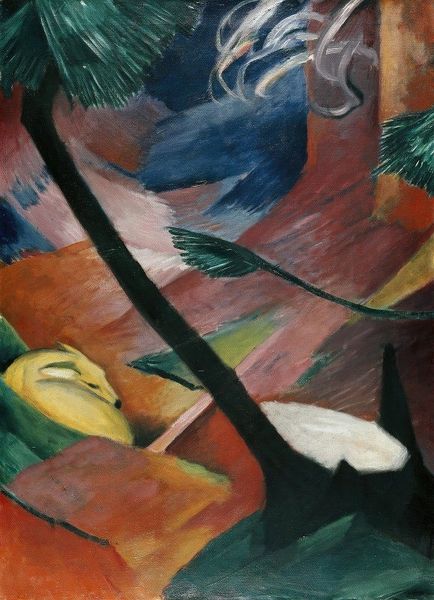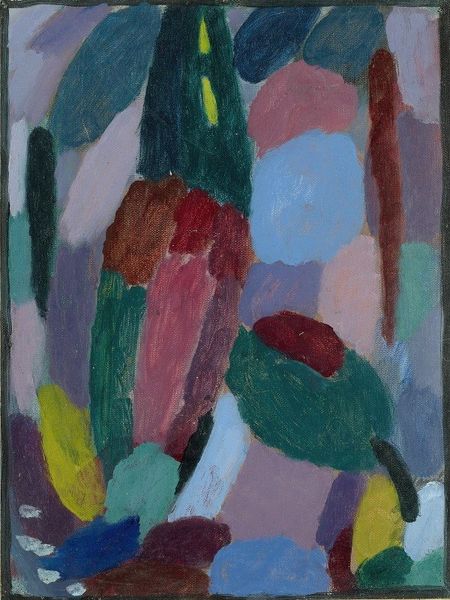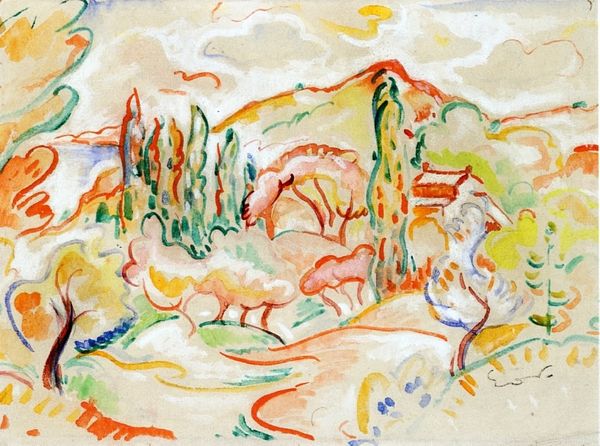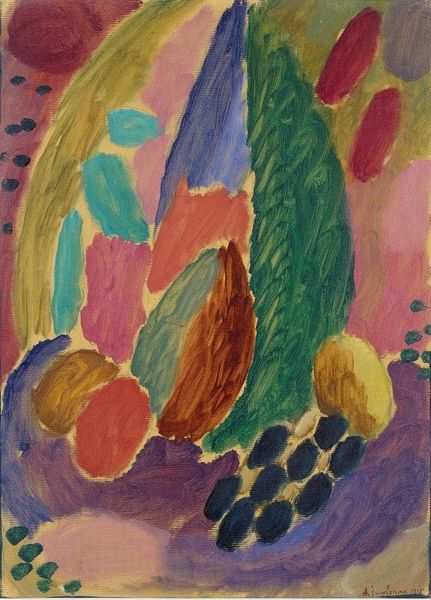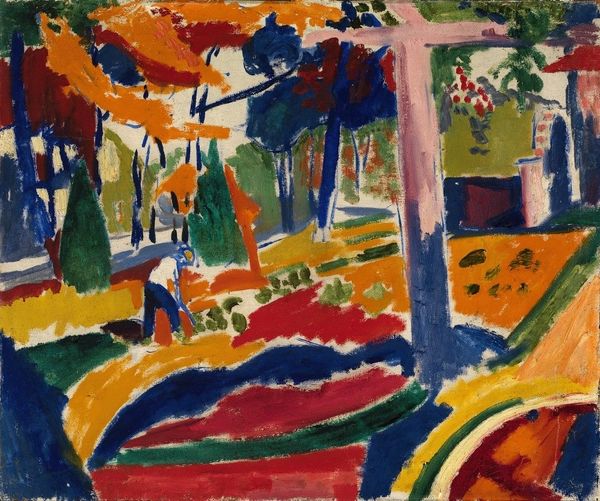
painting, oil-paint
#
painting
#
oil-paint
#
landscape
#
german-expressionism
#
abstract
#
expressionism
#
modernism
#
watercolor
Copyright: Public Domain: Artvee
Editor: Alexej von Jawlensky's "Frosty Day," created in 1915 using oil paint, presents a landscape distilled to its most elemental forms. I find it strangely unsettling, despite the seemingly simple composition. The colors, though muted, feel almost violent in their application. What do you see in this piece? Curator: It’s fascinating that you pick up on the unsettling nature of the work. Remember that landscapes, from the beginning, were frequently infused with meanings reflecting societal values and worldviews, carrying ideological weight. Notice how the overt simplicity masks deeper anxieties. The abstracted forms and seemingly arbitrary colors—the purple and maroon in the sky, for example—aren’t merely decorative. Editor: So, you're suggesting these colors aren’t simply aesthetic choices? What do they represent then? Curator: Exactly. They signal a departure from naturalism, and embrace emotional and psychological depth. Look closely; those tree forms – are they really trees, or stand-ins for something else, maybe the self, reaching upwards in a harsh environment? Colors and lines act as visual signifiers, embedding layers of cultural, religious, and philosophical perspectives. Jawlensky used symbolic meaning that goes beyond just nature. Editor: That's a really interesting point about the trees possibly reflecting something else, more personal or spiritual. Curator: It is precisely through these symbols and abstracted forms that the artist communicates anxieties of identity. The frost suggests a concealing, transformative process. How does nature itself transform us and hide the real? How do those shapes reflect psychological spaces in reality? Editor: Thinking about the frosty day in terms of hiding and transformation makes me consider how external conditions can reflect internal states. Curator: Indeed, and isn’t that the essence of Expressionism? It offers continuity to emotional human experience, a lens for reading human life reflected in visual symbols across time. Editor: It's interesting how much meaning can be packed into what initially looks like a simple landscape. It definitely adds to my understanding.
Comments
No comments
Be the first to comment and join the conversation on the ultimate creative platform.
